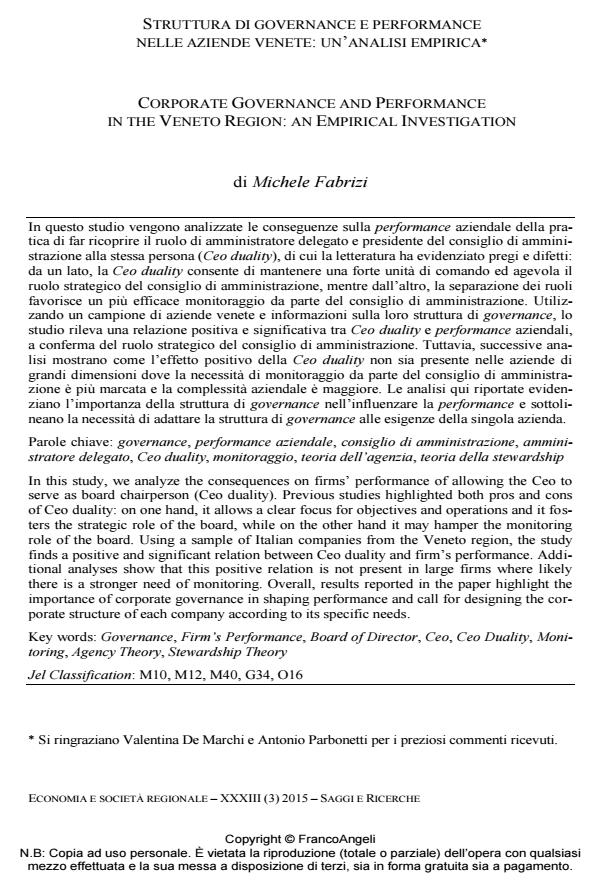Corporate governance and performance in the veneto region: an empirical investigation
Journal title ECONOMIA E SOCIETÀ REGIONALE
Author/s Michele Fabrizi
Publishing Year 2016 Issue 2015/3
Language Italian Pages 21 P. 122-142 File size 333 KB
DOI 10.3280/ES2015-003008
DOI is like a bar code for intellectual property: to have more infomation
click here
Below, you can see the article first page
If you want to buy this article in PDF format, you can do it, following the instructions to buy download credits

FrancoAngeli is member of Publishers International Linking Association, Inc (PILA), a not-for-profit association which run the CrossRef service enabling links to and from online scholarly content.
In this study, we analyze the consequences on firms’ performance of allowing the Ceo to serve as board chairperson (Ceo duality). Previous studies highlighted both pros and cons of Ceo duality: on one hand, it allows a clear focus for objectives and operations and it fosters the strategic role of the board, while on the other hand it may hamper the monitoring role of the board. Using a sample of Italian companies from the Veneto region, the study finds a positive and significant relation between Ceo duality and firm’s performance. Additional analyses show that this positive relation is not present in large firms where likely there is a stronger need of monitoring. Overall, results reported in the paper highlight the importance of corporate governance in shaping performance and call for designing the corporate structure of each company according to its specific needs.
Keywords: Governance, Firm’s Performance, Board of Director, Ceo, Ceo Duality, Monitoring, Agency Theory, Stewardship Theory
Jel codes: M10, M12, M40, G34, O16
Michele Fabrizi, Struttura di governance e performance nelle aziende venete: un’analisi empirica in "ECONOMIA E SOCIETÀ REGIONALE " 3/2015, pp 122-142, DOI: 10.3280/ES2015-003008